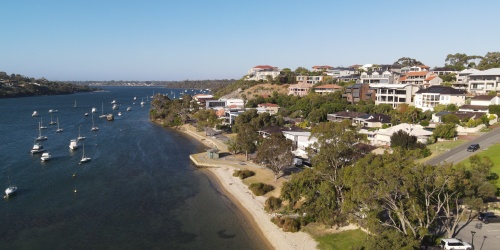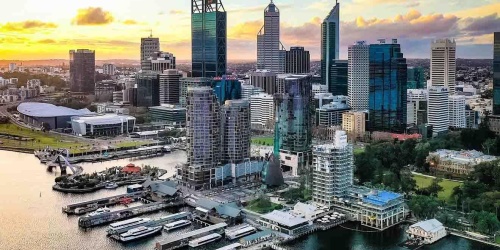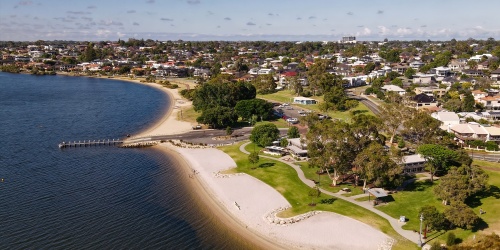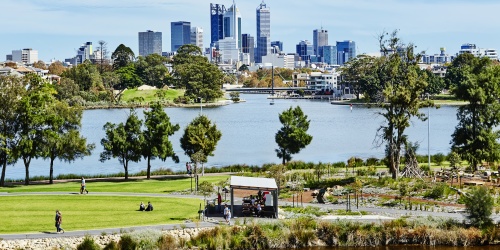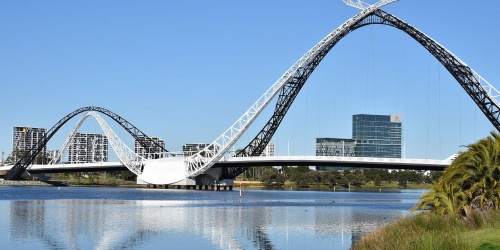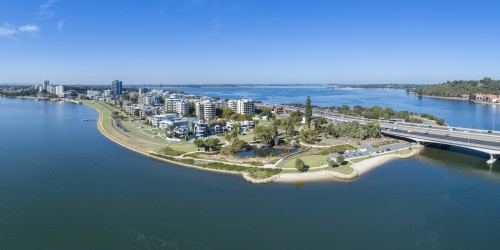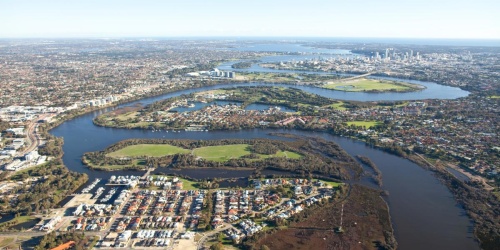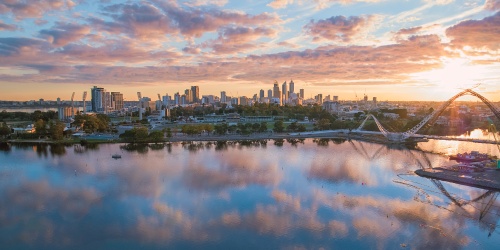
Photo by Boon Leong Tay
This page explains how to lodge a permit application for works, acts and activities in the Swan Canning Development Control Area (DCA).
More information on the DCA, including how to find out if your property is affected by the DCA, is available on the Swan Canning Development Control Area page.
Permits allow works, acts or activities to be assessed, authorised, managed and monitored to ensure the protection and long-term enjoyment of the Swan and Canning rivers.
Permit applications process
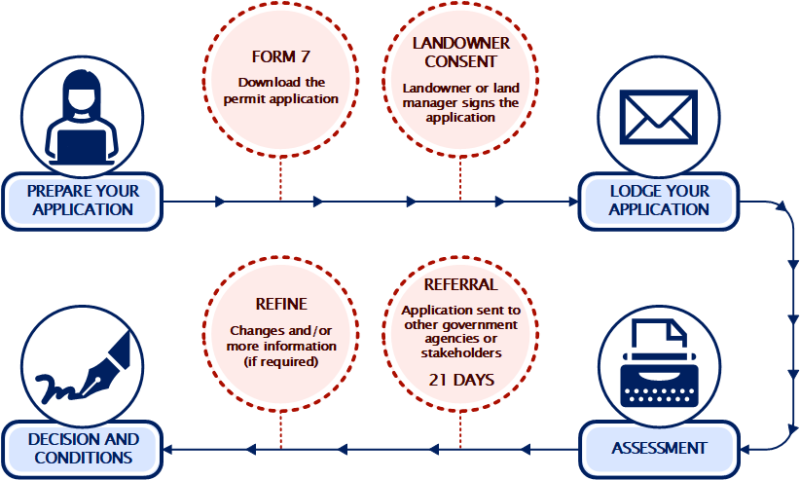
Figure 1 Permit application and assessment process
Figure 1 outlines the permit application and assessment process. If you would like more information about submitting a permit application to DBCA or you’re not sure what kind of approval you need, come and chat to us. Follow the link below and fill in the assessment questionnaire to give us an idea about what you’re proposing, and we can let you know what kind of approval you’ll need and help you with your application. Be sure to also check out DBCA’s policies, plans and guidelines manual as your proposal will be assessed against these to ensure it complies. Otherwise, jump to the How to apply section below.
- Chat to us
Send us a enquiry or complete this quiz to tell us more about your proposal and we will get back to you with help on how to apply. - Policies, plans and guidelines manual
What we consider when assessing applications in and around the Swan Canning Riverpark.
Who needs to apply?
Anyone wishing to undertake any of the following works, acts or activities in the DCA may require a permit:
- Signage
- Repairs and maintenance
- Emergency works
- Erosion control
- Temporary structures (i.e. will be in place for less than six months)
- Works by a leaseholder valued at less than $500,000 e.g. small building upgrades within the lease area
- Works by a Schedule 5 Authority (such as the local government) valued at less than $5,000,000 e.g. carpark resurfacing, installation of a toilet block, etc.
- Fire hazard reduction
- Aircraft activity
- Maintenance dredging
- Scientific studies
- Bank disturbance
- Riverbed disturbance
- Taking worms or other invertebrates
- Removing or trimming trees or other vegetation
- Spectator events in the River reserve that are not in the Department of Transport’s Aquatic Events Calendar
The DCA includes the waters of the Swan and Canning rivers and adjoining parks and recreation reserves, including privately owned land reserved for parks and recreation.
More information on the DCA, including how to find out if your property is affected by the DCA, is available on the Swan Canning Development Control Area page.
For proposals that involve new structures, extensive construction, or a change of use, see the Making an application for development page. For commercial operations, see the Applications for commercial operations page.
How to apply
Complete the Form 7 Permit Application (available for download below) and submit your application to rivers.planning@dbca.wa.gov.au.
Before you apply, it’s recommended that you review DBCA’s policies, plans and guidelines manual as your application will be assessed against these to ensure it is consistent with their objectives. You can also download the application checklist (available below) to confirm what details to include in your application.
Please note that DBCA may require modifications to your proposal to address environmental or amenity factors, community values, shared use, and safety.
Please contact us if you would like assistance with your application or would like to discuss your proposal further. We can also help let you know which policies would be most relevant to the assessment of your proposal.
Application checklist
When submitting a permit application, include as much information as you have in the application form – including how you intend to carry out the works or activity. This will assist in the assessment process.
The following information should be included in your permit application (a copy of this checklist is also available in the downloads section below):
- Completed application form, including written consent of the landowner(s).
- Detailed written description of the proposal
- Location details (i.e. address, lot number, nearest cross street, etc.)
- Map of the subject area clearly indicating the location and nature of the proposal
- Photographs of the site
- Details on any discussions had with other government agencies regarding the proposal
- Proposals involving structures, construction, excavation, infill or retaining should also include the following details:
- Scaled plans and proposal specifications (including materials, colours, etc.)
- Method of construction
- Details on how environmental risks associated with the works will be managed
- Cost of the proposed works
- Proposals involving vegetation removal should also include the following details:
- Number of trees proposed to be removed
- Specific location of trees to be removed (circled on an aerial photo, map or detailed plan)
- The species of the trees proposed to be removed
- Written justification for the removal/trimming of the vegetation
- Proposals involving temporary structures should also include the following details:
- Proposed installation time period
If insufficient information is provided with the application, further information will be sought from the applicant. If the required information is not provided, the application will be returned. DBCA is unable to process the application without the completed (and correct) application form and relevant information.
How long does it take to assess a Permit application?
Permit approvals cover a wide range of works, acts or activities, and so processing times vary depending on the application.
Permit applications for standard works, such as like-for-like repairs and maintenance, can be processed within 28 days (often sooner) once all relevant information has been received.
Permit applications for more complex proposals may require referrals to other agencies, such as the local government as the land manager, or to other government agencies for technical advice (see the Frequently Asked Questions section for a list of government agencies that DBCA refers applications to). Agencies have 21 days to provide a response to DBCA.
DBCA or other agencies may request that a site meeting takes place, or for additional information to be provided, or request that an application be amended, as a result of their assessment. There may also be cause for public consultation, depending on the scale and nature of the proposal. DBCA will contact you if this is needed.
If approved, your approval may also include conditions that need to be satisfied before works can start. Documents provided in accordance with these conditions may also be referred to other agencies and stakeholders. Please allow at least 14 days for the review and assessment of any documents required prior to the commencement of works.
You may also require approval from other government or local government agencies, depending on what you are proposing.
Proposals that require development of infrastructure in the DCA may require DBCA or Ministerial approval under Part 5 of the Swan and Canning Rivers Management Act 2006. DBCA can advise on the timeframe for Part 5 applications depending on the nature of the proposal. More information on the process for obtaining a Part 5 development approval is provided on the Making an application for development page.
If you’re not sure what kind of approval you need, contact us at rivers.planning@dbca.wa.gov.au or complete the online enquiry quiz.
Penalties and infringements
Anyone who undertakes works, acts or activities within the DCA without a permit may be issued an infringement notice and fined $5,000.
The following activities are generally not permitted within the DCA and can incur a fine of $5,000:
Leaving a vessel unattended for 8 hours or more outside of a vessel storage facility.
- Launching a vessel directly from a trailer into the river (vessels must be launched from a designated boat ramp).
- Using a vessel as accommodation.
- Using a courtesy mooring for more than four (4) hours in a six (6) hour period.
- Using a courtesy mooring for a vessel larger than what is permitted on the courtesy mooring sign.
- Littering.
If you have any questions in relation to the above, please contact us at rivers.planning@dbca.wa.gov.au.
A permit may be suspended or revoked if:
- The works or activity, if continued, would have an adverse impact on the ecological and community benefits and amenity of the Swan Canning Riverpark.
- A breach of condition or restriction stated on the permit.
- False or misleading information included in the application.
You will either:
- Receive a Notice of Proposed Revocation or Notice of Proposed Suspension. OR
- Receive a Notice of Interim Suspension along with a Notice of Proposed Revocation or Notice of Proposed Suspension. This notice will suspend your permit immediately and all works or activities must cease.
You will be given time to provide a response to the notice before any action is taken by DBCA.
DBCA will consider your response before deciding on the outcome of the suspension or revocation notice. Possible outcomes are:
- DBCA may lift the Interim Suspension and take no further action.
- The suspension or revocation of your permit will not be actioned.
- Your existing permit may be revoked, and a replacement permit issued.
- Your permit may be suspended for a set period and the activity must cease until that time expires or you are advised by DBCA.
- Your permit may be revoked, and no replacement issued. If this occurs, you may apply for another permit, but the works or activity will need to be modified.
Frequently asked questions about permits
Do I need approval to hold a spectator event in the Development Control Area?
Unless your event is being held in a Swan Estuary Marine Park, no approval from DBCA is required as long as you have approval from the Department of Transport under the Navigable Waters Regulations 1958 Regulation 51C for an on-water spectator event and associated temporary infrastructure.
Similarly, if you have approval from the land manager of the reserve (usually the local government) for a spectator event and associated temporary infrastructure being held on-land, approval from DBCA is not required.
If you’re unsure, please contact DBCA’s Swan Canning Waterways Branch, Statutory Assessments Unit, on 9219 9000 or at rivers.planning@dbca.wa.gov.au.
Do I need approval for repairs and maintenance?
A permit is required for any repairs and maintenance works being carried out on structures within the DCA or over water, this is to ensure that works include preventative measures (such as the installation of a silt curtain) to protect the river.
Repairs and maintenance is considered works that do not change the appearance or function of a structure. If you are proposing to change the appearance or function of a structure (e.g. add an extension to a jetty), then a different type of approval may be required.
If you’re unsure, please contact DBCA’s Swan Canning Waterways Branch, Statutory Assessments Unit, on 9219 9000 or at rivers.planning@dbca.wa.gov.au.
Do I need approval for erosion control works (on public and private property)?
A permit is required for the installation of erosion control structures, even on private property. This is to ensure that the proposed structures are appropriate and that any works include preventative measures (such as the installation of a silt curtain) to protect the river.
No permit is required for like-for-like repairs to erosion control structures. However, upgrades or alterations will require a permit.
If you’re unsure, please contact DBCA’s Swan Canning Waterways Branch, Statutory Assessments Unit, on 9219 9000 or at rivers.planning@dbca.wa.gov.au.
Is there a time limit on how long a permitted temporary structure can be in place?
Yes, a structure can only be permitted as ‘temporary’ for no more than 6 months.
I’m a leaseholder, what works can I undertake via a permit?
A permit can be issued for works, acts and activities by a leaseholder of land or waters in the DCA provided the cost is less than $500,000 and the works are contained within the existing lease area.
Works costing over this amount will require a development approval issued by the Minister for Environment under Part 5 of the Swan and Canning Rivers Management Act 2006.
Does the removal and / or trimming of vegetation require a permit?
Yes, generally the removal and/or trimming of vegetation, including for preventative fire hazard reduction, within the DCA requires a permit.
What approvals are required for dredging in the Swan Canning Development Control Area?
Maintenance dredging that is necessary for the maintenance of access by vessels to marinas and jetties in the Riverpark can be undertaken via a permit approval.
Dredging that is not for maintenance purposes requires a development approval issued by the Minister for Environment under Part 5 of the Swan and Canning Rivers Management Act 2006.
Still have questions?
Refer to the Frequently Asked Questions page for more information. This page includes information about application fees, landowner consent, referral agencies, etc.
